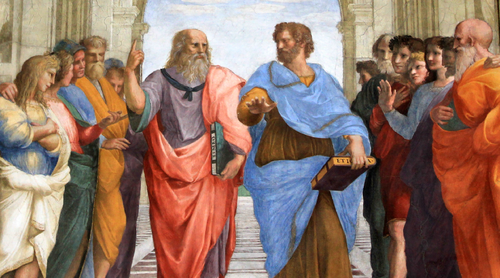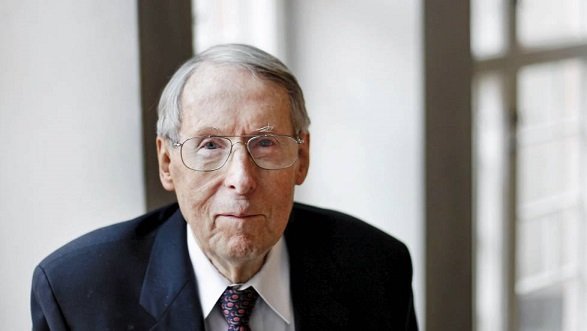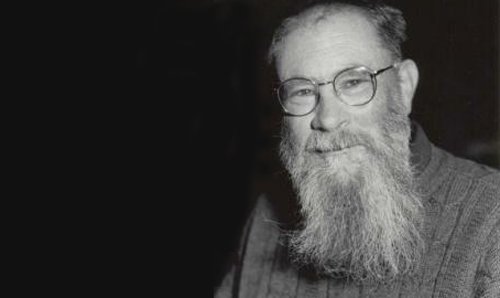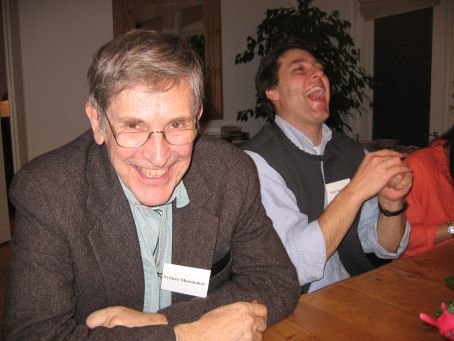How do we get from information to consciousness? Why should we? In the previous article, we started out with a notion of conscious freedom, and we are now on our way to understand what the nature of consciousness is. We found last time that consciousness can not be described exclusively in physical or spiritual terms, but has to be explained by a common, neutral medium. This medium is the language of information. The immediate question is, how can mere information have anything to do with consciousness? Here we examine different ways to understand why information is the best vehicle to explain consciousness.

Previous articles:
Free Will and Conscious Freedom
Consciousness: A New Era of Science
The Notion of Information

The best description of information involves the idea of excluded possibilities. Toss a coin, and when it lands you have excluded one possibility. The more possibilities are excluded, the more information we get. This is a general idea of information, that for instance Jaakko Hintikka attributes approvingly to Quine. Hintikka's idea is that “the more alternative possibilities a proposition excludes, the more narrowly can we restrict our attention, which is the manifestation of having more information” (Hintikka 2007). For our purposes, we can substitute ‘proposition’ with ‘qualia’ or 'phenomenal character.'
According to Hintikka, Quine says that “such use of the notion of information would be feasible only if we could specify all the different possible states of the physical world” (Hintikka 2007). Against this Hintikka notes that we can simply speak in terms of “systems” and specify the possible states of such systems; in this sense, the (actually) excluded possibilities are always relative to the (counterfactual) possibilities of the system. I will argue that this notion of information is related to the explanation of consciousness, considered as relative to an intrinsic “system,” e.g. the brain.
The general idea is that consciousness involves a range of excluded possibilities, and for this reason counts as informative. This deceptively simple idea has surfaced several times in 20th century philosophy, although we only now are able to tie them together with unified view.
The Hypothesis of Phenomenal Information:

David Lewis, a major figure in analytic philosophy famous for his "many-worlds" ontology (modal realism), proposed The Hypothesis of Phenomenal Information as the ultimate way to claim that consciousness is something significant.
“Besides physical information there is an irreducibly different kind of information to be had: phenomenal information. The two are independent. Two possible cases might be exactly alike physically, yet differ phenomenally. When we get physical information we narrow down the physical possibilities, and perhaps we narrow them down all the way to one, but we leave open a range of phenomenal possibilities.”
- Lewis, “What Experience Teaches”
Personally he thought the hypothesis was untrue because of being incompatible with materialism. Other philosophers like Lyncan however, have later disagreed with him on this point, noting:
“a perfectly good sense of ‘information’, more finely grained than that of ‘fact,’ in which there is after all phenomenal information, indeed (!) phenomenal information inaccessible to objective, third-person science”
- Lycan, "Phenomenal information again"
I do not wish to settle the issue here, only give an overview and let you the reader decide for yourself. The idea against Lewis and others who claim that consciousness is of illusory significance, is that while phenomenal information is ontologically subjective (essentially subjective existence) it is still possible to study it in an epistemologically objective way that is compatible with physicalist science. See Searle’s distinction between ontological subjectivity and epistemological objectivity.
Quality Space

Quine introduced his crucial notion of a 'quality space' in (Quine 1960) to solve the problem of how a subject could distinguish some things as more similar to each other than others. For instance, a child might distinguish cyan as being more similar to green than to red. As Quine notes, it follows naturally from considerations on such similarity and difference relations to “credit the child with a sort of prelinguistic quality space” (Quine 1960). Notice that a quality space is not just a set of discriminations, but a structured set of discriminations. The structured set of information gives rise to many dimensions along which particular discriminations are related according to similarity and difference relations.

Chalmers comes to a similar notion partly from reflection on phenomenology. Chalmers simply notes that we “find information realized in our phenomenology. States of experience fall directly into information spaces in a natural way” (Chalmers 1996). Chalmers justifies this by appealing to the “natural patterns of similarity and difference between phenomenal states, and these patterns yield the difference structure of an information space” (Chalmers 1996). While Quine wanted to rigorously rely on behavioral measures, Chalmers finds it natural to appeal directly to the difference relations in our phenomenology to establish that it involves such information.

Shoemaker agrees with Chalmers point that, if we assume physicalism there “must be a similarity ordering on the physical states that realize experiences having complex contents; there must also be a similarity ordering on the physical properties of these states that contribute to their similarity or difference along particular dimensions” (Shoemaker 1996). Shoemaker comes to such conclusions based on philosophical considerations akin to the argument from color-inversion.

Churchland comes to a similar conclusion based on philosophical and scientific reflection on psychological theories of perception. Churchland holds similar to Shoemaker that the representational content is given by two things. For Churchland, this means that the content of a given position in an information-space (“a point in activation space”) is given by two different things. (Churchland 1998).
- (1) "its spatial position relative to all of the other contentful points within that space."
- (2) "its causal relations to stable and objective macrofeatures of the environment.”
While Chalmers, Shoemaker and Churchland may hold that phenomenal character is always associated with or even constitutively explained in terms of structural information, only Shoemaker holds that a notion of a quality space is constitutively linked to phenomenal character. All three, with the very slightly possible exception of Chalmers, hold that structural information is constitutive of phenomenal experience.
Conclusion
Shoemaker partly argues from philosophical inversion thought experiments, Chalmers partly argues from reflection on phenomenology and Churchland partly argues from perceptual psychological considerations. That so many different thinkers and methodologies converge on the explanation of phenomenal experience in terms of such a similar notion of structural information should be taken seriously. In particular, that these thinkers give an account of phenomenal characters explained partly in terms of a quality or an informational space suggests that structural information is essential to phenomenal consciousness.
Up Next

Next, we look at Tononi’s theory of the phenomenal consciousness. Tononi gives a scientific, formal, testable account of a kind of information that according to the theory is both necessary and sufficient for experience. To simplify, Tononi conjectures that whenever there is a complex of Integrated Information there is consciousness.
I hope you enjoyed this article. Feel free to share your thoughts in the comments, and stay tuned for the next post!
Follow me @clains or @psylains
References
Balduzzi, D. and G. Tononi (2009). "Qualia: The Geometry of Integrated Information." PLoS Comput Biol 5(8): e1000462.
Broughton, L. M. (1981). "Quine's 'quality space'." Dialectica 35: 291-302.
Chalmers, D. J. (1996). The Conscious Mind: In Search of a Fundamental Theory, Oxford University Press.
Churchland, P. M. (1998). "Conceptual similarity across sensory and neural diversity: The fodor/lepore challenge answered." Journal of Philosophy 95(1): 5-32.
Edelman, G. M., et al. (2011). "Biology of Consciousness." Frontiers in Psychology 2.
Hintikka, J. (2007). Socratic Epistemology: Explorations of Knowledge-Seeking by Questioning, Cambridge University Press.
Lewis, D. (1990). What experience teaches. Mind and Cognition.
Lycan, W. G. (1995). A limited defense of phenomenal information. Conscious Experience. T. Metzinger, Imprint Academic.
Lycan, W. G. (1998). "Phenomenal information again: It is both real and intrinsically perspectival." Philosophical Psychology 11(2): 239-242.
Marshall, R. (2013). The Possible Worlds Hedgehog.
Perry, J. (2001). Knowledge, Possibility, and Consciousness, MIT Press.
Putnam, H. (1991). Representation and Reality, A Bradford Book.
Quine, W. V. O. (1960). Word & Object, The Mit Press.
Shoemaker, S. (1982). "The inverted spectrum." Journal of Philosophy 79(July): 357-381.
Shoemaker, S. (1994). "Phenomenal character." Noûs 28(1): 21-38.
Shoemaker, S. (1996). "Colors, Subjective Reactions, and Qualia." Philosophical Issues 7: 55-66.
Tononi, G. (2008). "Consciousness as Integrated Information: a Provisional Manifesto." The Biological Bulletin 215(3): 216-242.
I consider Tononi's approach most promising, but there is more to consciousness than information integration alone. What I miss in the considerations by the philosophers is a self-monitoring feedback mechanism. This is IMHO the crux of consciousness. Good post, will upvote and follow you.
Downvoting a post can decrease pending rewards and make it less visible. Common reasons:
Submit
I agree! It's the most promising one, and lightyears ahead of most other theories, but definitely still rough around the edges with regards to its uniqueness and simplicity, and explanatory reach with issues like self-monitoring, free will, valence, and other issues.. Thanks for the comment and follow! :)
Downvoting a post can decrease pending rewards and make it less visible. Common reasons:
Submit
I also mentioned Tononi in a post on consciousness I wrote 3 weeks ago:https://steemit.com/internet/@technovedanta/technovedanta-from-a-conscious-internet-to-a-panpsychic-theory-of-everything
Hope u like it.
Downvoting a post can decrease pending rewards and make it less visible. Common reasons:
Submit
Thanks I'll check it out :)
Downvoting a post can decrease pending rewards and make it less visible. Common reasons:
Submit
Hello - just a heads up: I included your piece in a review of today’s top #philosophy articles. Hoping to bring you more readers and discussion!
https://steemit.com/philosophy/@aaanderson/the-philosophy-review-nov-26-2016
Downvoting a post can decrease pending rewards and make it less visible. Common reasons:
Submit
Thanks. Publishing another one today. :)
Downvoting a post can decrease pending rewards and make it less visible. Common reasons:
Submit
This post has been linked to from another place on Steem.
Learn more about and upvote to support linkback bot v0.5. Flag this comment if you don't want the bot to continue posting linkbacks for your posts.
Built by @ontofractal
Downvoting a post can decrease pending rewards and make it less visible. Common reasons:
Submit